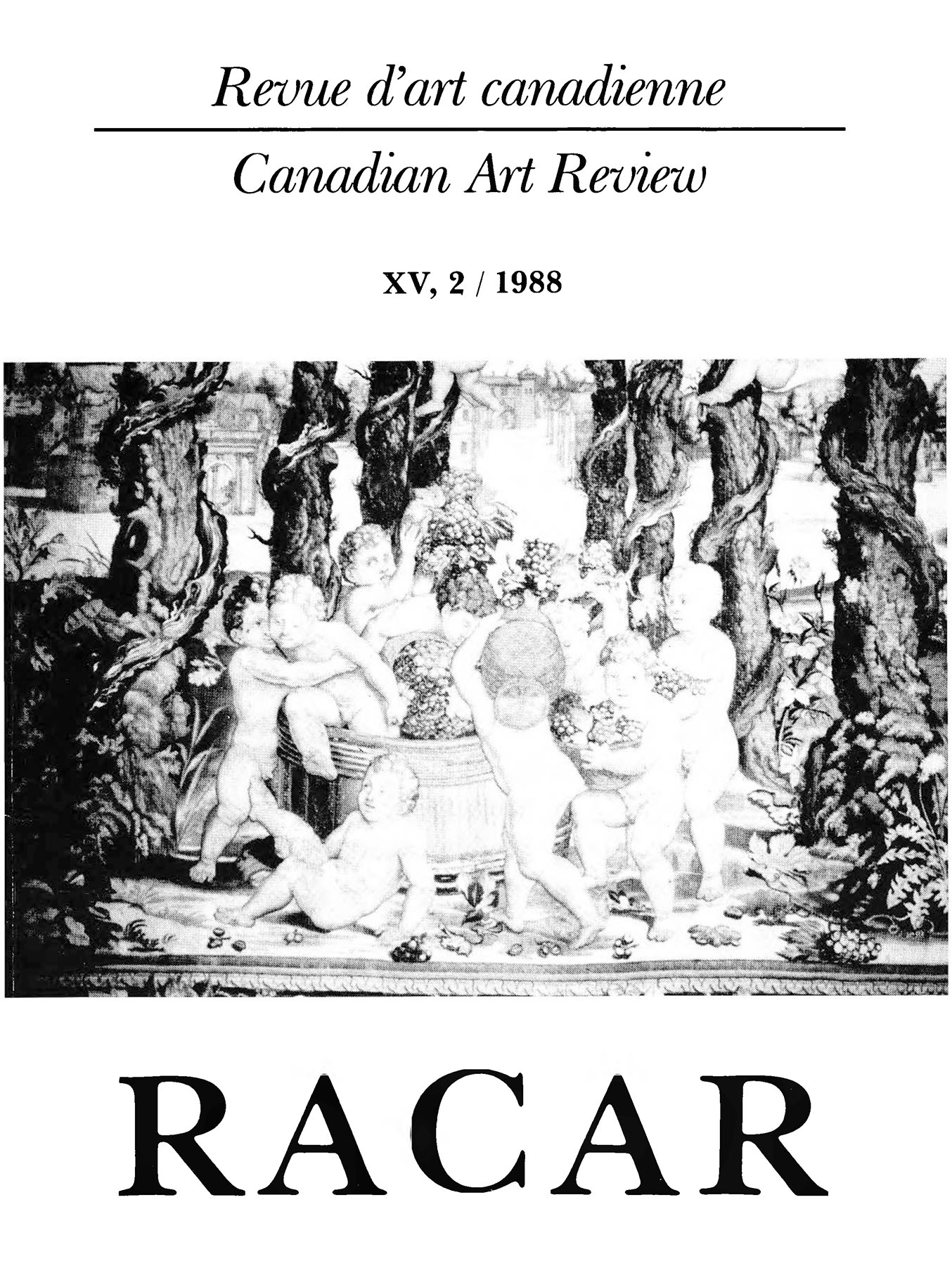Résumés
Abstract
Two sets of tapestries depicting Puttini can be related to the patronage of the Gonzaga family. On his death in 1563, Cardinal Ercole Gonzaga possessed a series of 15 tapestries with Puttini designed by Giulio Romano and woven in the workshop of Nicholas Karcher, probably during his stay in Mantua between 1539 and 1545. The iconography of the four complete surviving panels relates only casually to the description of the puttini in Philostratos’s Images. As the patron of the set, Cardinal Ercole might have wished an emblematic ambiguity for these scenes with reference both to pagan Dionysiac life and to the Christian eucharistic theme of wine. Accordingly, the so-called Bark of Venus might be interpreted in several ways. Ercole’s inventory of 1563 also mentions a set of twelve spallere or dorsal tapestries with “Fortune led by four Eagles.” Giulio Romano’s design in Haarlem, where the woman holding a rudder may stand for Fortuna, can be related to these now lost weavings. As the woman in the Bark of Venus also holds a rudder, she probably alludes to Fortuna leading the good fame of Ercole whose coat of arms appears on the top of the weaving and whose name is written by a genius on a cartellino on the foreground. Moreover, as the general scheme of this tapestry is closely related to that of the Miraculous Draught of Fishes in Raphael’s Acts of the Apostles set, the Bark of Venus/Fortune might be presumed to have an underlying Christian meaning.
Ercole’s younger brother, Ferrante, founder of the Guastalla branch of the Gonzaga family, ordered a similar set of Puttini from the Brussels workshop of Willem de Pannemaker. This can be deduced from correspondence with Cardinal Granvella in 1571-74 concerning a copy of these tapestries from the same weaver. When the painter Giovanni Battista Lodi proposed in February 1552 to entrust Ferrante’s order for tapestries woven with gold and silver to Willem de Pannemaker, he was unquestionably referring to the Marzotto Puttini, the only series with precious metal in the Gonzaga collection, where it can be traced until 1709. Thereafter, the set can be documented in various Venetian collections until it was acquired by its present owner, the Marzotto family in Trissino.
The copies made for Granvella, partially preserved in the Spanish Royal Collection, are identical to the six Marzotto tapestries. Both sets bear the mark of Pannemaker, but the Marzotto tapestries made for Ferrante are the first edition.
The Brussels Puttini set relies on Northern Italian models, either from the workshop of Giulio Romano or from Milanese painters. Unlike the set created for Cardinal Ercole, many details made it clear that the cartoons created for Ferrante were designed in Flanders. The six pieces, representing the harvest of the grapes, the pressing of the wine, and the dance are thus devoted to the theme of Dionysiac paradise and peace as a dialectical complement to Ferrante’s older Brussels set of the Fructus Belli. The building in the right background of the Dance probably represents, at least in an idealized way, the Villa Gualtiera-Simonetta, Ferrante’s residence in Milan.
Veuillez télécharger l’article en PDF pour le lire.
Télécharger

